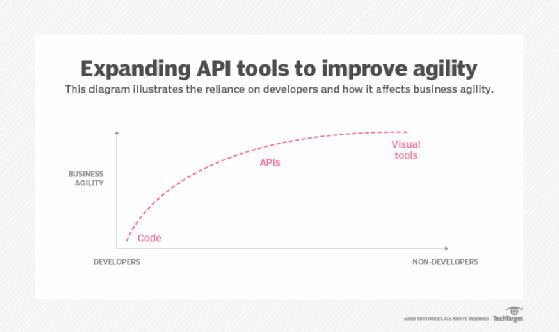
backgroundstore - Fotolia
Programmability in UC needs more than communication APIs
The programmable enterprise has found its way into UC through CPaaS platforms. But organizations need more than communication APIs to achieve integration success.
The programmable enterprise is where we are headed. Ever since the first computer was introduced, we have been moving toward a more automated world. The main drive for it all is the need to do more with less and to scale a lot faster.
The programmable enterprise is the next step in this evolution through new technology, including cloud, machine learning and microservices. The focus here is on programmability related to the communication needs of an enterprise. The reason for that focus stems from a few important trends in communications, including the following:
- Democratization of communications. Communication no longer requires carrier relations -- an expensive and time-consuming process. Intermediaries in the form of communications platform as a service (CPaaS) offer general-purpose communication APIs.
- Power to the people. Communication channels are increasing, with customers expecting businesses to communicate where they are and not where the business is.
- Machine learning and personalization. Businesses now have the means to better target and personalize their communications through automation and machine learning.
- Competition. Businesses are working at a faster pace and need to adjust rapidly to the changing needs of the market. That requires agility that is available only through programmability.
All this leads to the use of APIs in enterprises to integrate the various systems they use to operate on a daily basis, from integrating a customer-relationship management platform with the ordering system to connecting HR with ERP. The integration combinations are endless as each enterprise has its own internal systems and best practices.
In many cases, these integrations are implemented to enable better communication with employees, customers, prospects or partners. While some integrations are machine-to-machine, these involve internal and external communication platforms to reach out to people, and that leads to the need for more flexibility. The challenge? When organizations use only communication APIs for such integrations, they rely heavily on developers and shut out other decision-makers within the enterprise.

Drag-and-drop tools open integrations beyond developers
When organizations develop communications capabilities in-house, they rely solely on developers to write the code. But this approach has little agility as development work is messy, expensive and risky in nature.
The introduction of communication API platforms, such as CPaaS, has brought more business agility. Now, instead of focusing on the underlying communication infrastructure, enterprise developers can focus on the core business cases.
In recent years, communication vendors have started introducing visual design tools. These drag-and-drop flow tools can be used to define how interactions take place. Many CPaaS vendors offer such tools, including Twilio, Plivo, MessageBird, Voximplant, Infobip and IMImobile.

With these tools, a business can rely less on developers and include non-developers within the scoping and use of communication flows. This improved business agility enables the introduction of more flows and mechanisms, such as A/B testing, which is used widely in web marketing automation, but less frequently in communications.
Communication APIs aren't enough anymore. Visual tooling is one of the latest additions to the arsenal that enterprises have when competing for the customer's mindshare in the market.








